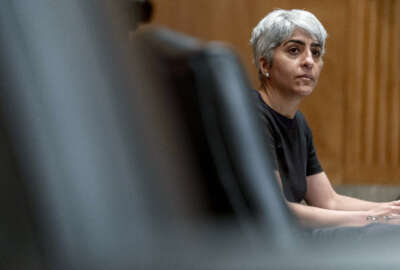
It’s late 2022 and federal retirement is still a paperwork chore
In the digital age, federal retirement still takes by-hand data gathering and paper. Give yourself months.
The digital, online age has made life both easier and more complex. One reason is everything requires an account. The other day I received an email to answer a one-question poll: Would I be interested in attending my 50th high school reunion? But first I had to make an account somewhere and establish a password.
We’ve all encountered this phenomenon 86 million times. It might be tiresome and something else to manage, but think of the alternative, analog way of doing routine tasks.
Call this the TV phenomenon. Between cable and streaming, what’s available on TV has exploded with choices. You need at least a couple of button-covered remotes, plus multiple accounts and passwords. Not technically difficult, just a pain in the neck to manage. But who would return to the 3-channel, rabbit-ear, twist-the-dial days?
The federal sphere is all about process. Precious little of it is yet modernized.
For example, many agencies are looking to hire contractors to help them modernize the very services the offer to the public. Congress gave them an extra billion dollars for this purpose. But finding, getting bids from, and contracting with a company is one of the most complex, paper-intensive processes under heaven. Yes there are computers, but mostly they generate electronic versions of paper.
To their credit, some agencies have added digital services to help citizens do things. Establishing a MySocialSecurity account, for instance, is relatively easy. The government has information about people it uses to verify they are who they say they are.
If you ever plan to retire from the government, give yourself lots of time for a paper-intensive… process.
In a speech a couple of weeks ago, Office of Personnel Management Director Kiran Ahuja said a goal of her time in office was to see the retirement process modernized. To tell you the truth, I had no idea how tiresome a process it really is until my interview with Abe Grungold. He advises federal employees on Thrift Savings Plan and retirement issues. Abe himself recently retired after 36 years of federal service.
Now, there’s a psychic and navel-contemplation component to retirement planning. That process takes place in your head and can last years. I’m personally about three years into my own navel-contemplation on this matter. Help is available, but ultimately it’s a decision as much in your gut as in your head.
Once you decide to retire, the fun really begins. Even before the paperwork you have to do, you face an enormous information gathering exercise. Just look at the list of data you need to compile, according to an OPM guidance page. The obvious question is, well, doesn’t the government have all this information about you? Shouldn’t you just push a virtual retirement button so you can turn your attention to that new house in a sun-drenched state?
The government does have all the information, but not in a manner it can plug into a digital service.
Grungold said he spent the better part of a year gathering all of the data and documentation. Why so much time? He didn’t want to accidentally leave anything out and thereby lower the annuity to which he is entitled. Grungold said the retirement calculators will go over your forms with a fine tooth comb. But if you miss something, no one will discover it and tell you.
The forms aren’t all that long. The immediate FERS retirement form is 14 pages, including four pages of instructions. But it’s detailed, and you need to download and print it before filling it out. A dining room table project in the digital age. And a niggling one at that.
At least it’s not a security clearance application, at 136 pages, nearly as long as a small novel.
No wonder it takes months for OPM to arrive at a final annuity figure, and that it deals with a never-ending backlog. OPM has made runs at modernizing this process. This automation process is way more complicated than it sounds, with potentially hundreds of business rules and scores of data sources to somehow bring into a digital process, just for one application.
Grungold, like so many feds, worked for several agencies in his career. In effect, he worked for six corporations, each with its own records. But the government is one entity, every dollar drawn on the same Treasury. Ahuja said the challenge of integrating and automating retirement is a customer experience challenge. She’s right.
Nearly Useless Factoid
Germany was the first country to implement daylight saving time
Source: AARP
Copyright © 2025 Federal News Network. All rights reserved. This website is not intended for users located within the European Economic Area.
Tom Temin is host of the Federal Drive and has been providing insight on federal technology and management issues for more than 30 years.
Follow @tteminWFED





